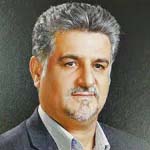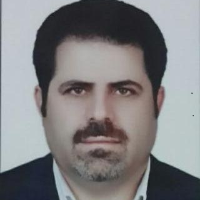Designing a Model for Culture-Oriented Intellectual Capital in Iranian Universities
Author(s):
Article Type:
Research/Original Article (دارای رتبه معتبر)
Abstract:
Intellectual capital is the knowledge, experience and information present in organizations for creating value defined as covert assets and resources available in the organization. These resources can be transferred to products, services and processes for improving culture and for creating values. This research has identified the main dimensions and the main indicators of the culture of intellectual capital in Iranian universities, and has analyzed them using interpretive structural modeling. This is an applied research which follows descriptive survey methods for data collection. First, the dimensions and indicators of the culture of intellectual capital were identified based on content analysis and comparison between the related researches. Then, relying on the opinion of a focus group of 8 people in the qualitative section and 25 experts in the quantitative section, all of whom professors and academic experts in the field of intellectual capital, the relationship between the components were identified through ISM method. The dimensions of culture-oriented intellectual capital included human capital, structural capital and relational capital, as well as the indicators of culture-oriented intellectual capital in the university, the relationship between which were determined and analyzed in an integrated manner. The statistical population of this research included valid scientific essays in the qualitative part. In the quantitative part, intellectual capital familiarity with national capital was considered. Finally, using Mic Mac analysis, the features of the criteria were determined in accordance with their effectiveness. The results of data analysis, through MATLAB ISM software, demonstrated that ethical managers and students familiar with Iranian-Islamic culture contain the independent variables of this study and other ones are interface variables having high level of dependence and guidance. In fact, in order to change the status of the culture-oriented intellectual capital, the universities are supposed to change these variables.
Keywords:
Language:
Persian
Published:
Scientific Journal of Islamic Management, Volume:28 Issue: 2, 2020
Pages:
193 to 219
https://magiran.com/p2159160
مقالات دیگری از این نویسنده (گان)
-
Analysis and identification of obstacles and strategies of interaction of Shahid Chamran University of Ahvaz with external environment
, Majeed Neysee*, Sheyda Echresh
Iranian Higher Education, -
A Systematic Review of the Studies Conducted on the Relationship between the Consequences of the Curricula of Technical and Vocational Universities and the Expectations of the Job Market
Sahar Safikhani Gholizadeh, Ali Beiramipur *, Yadala Mehr Alizadeh
Journal of Higher Education Curriculum Stufies, -
Evaluation of Effective Factors on the Self-improvement of Elementary School Principals in Isfahan City
Seyede Newsha Azizifar Abdolmahdi Moarefzadeh
Educational Developement of Jundishapur, -
Knowledge management establishment model in Farhangian University of Khuzestan province
Firoozeh Mayahi, Abdolmahdi Moarefzadeh *,
Quarterly Journal Of Educational Leadership & Administration,




